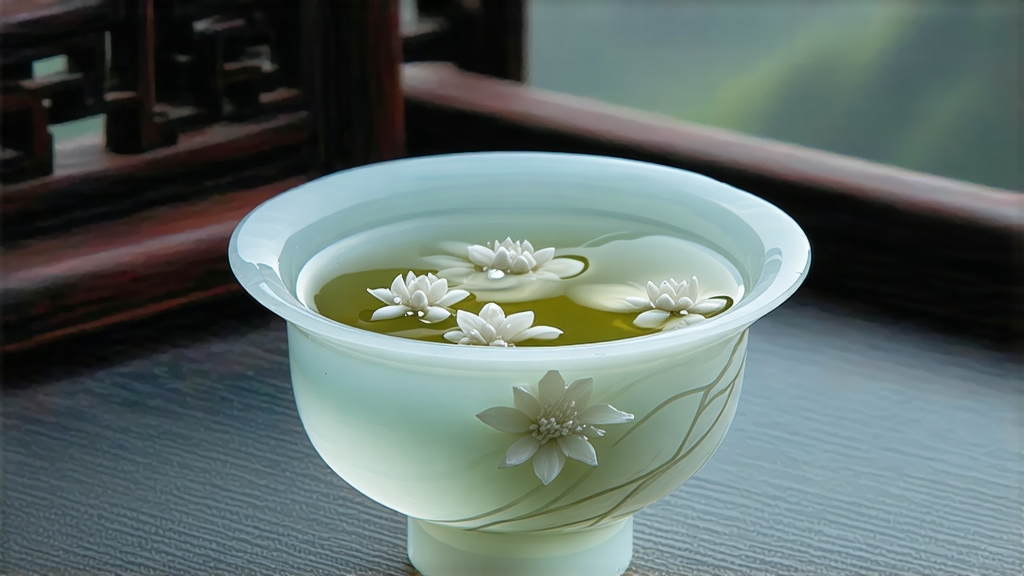
Among the six great families of Chinese tea, white tea is the least theatrical yet the most elusive; it is the art of doing almost nothing while achieving everything. Within this minimalist lineage, Bai Hao Yin Zhen—literally “White Hair Silver Needle”—sits at the apex, the purest expression of leaf, air, and time. To international drinkers accustomed to the swagger of roasted oolong or the deep bass of pu-erh, Silver Needle whispers rather than shouts, and that whisper has been traveling along the maritime Silk Routes since the Song dynasty, when a Fujian tribute of “white down tea” was first noted in the imperial log of 1115 CE. What follows is a complete map of that whisper: its origin stories, micro-terroirs, hand-craft, brewing science, and the quiet ritual of learning to taste the moon.
-
Historical echoes from the Min coast
Fuding and Zhenghe, two counties separated by a day’s walk in southern Fujian, both claim parentage. Folklore says a drought in the late Qing forced farmers to abandon the usual kill-green wok and simply sun-dried the buds; the pale, downy result pleased the governor’s palate and entered court chronicles as “Yin Zhen.” By 1891 the first commercial crates left Fuding’s Saiqi port for Hong Kong and, eventually, San Francisco’s Chinatown, where doctors touted its “cooling” properties during the California heatwave of 1906. Thus Silver Needle became China’s earliest globally branded white tea, predating both Keemun and Dian Hong in English auction catalogs. -
The botany of elegance
Only two cultivars are legally permitted for authentic Bai Hao Yin Zhen: Fuding Da Bai and Zhenghe Da Bai. The former produces plumper buds (2.5–3 cm) sheathed in a silvery indumentum so dense it resembles hoarfrost; the latter yields slightly slimmer needles but with higher polyphenol count, giving a brass-colored cup and more tannic backbone. Buds must be picked in a 48-hour window before Qingming festival, when amino acids peak and the first two leaves remain furled inside the embryonic shoot. One kilogram of finished tea requires roughly 30,000 buds, all hand-snapped with the thumbnail to avoid the bruise of scissors. -
Crafting without fire
The entire process is a choreography of dehydration: spread, rest, breathe, repeat. Fresh buds are first “withered” on bamboo trays placed under shade nets that filter 60 % of sunlight; this primary wither lasts 36–42 h and drops moisture from 75 % to 45 %. Workers never pile the buds deeper than 2 cm, turning them every hour to ensure even oxidation—yes, oxidation, because white tea is not “unoxidized”; it is enzymatically oxidized very slowly, at 25 °C and 65 % RH, developing floral lactones that give the famed “honeysuckle milk” note. A final low-temperature bake at 40 °C for 20 minutes arrests enzymes without caramelization, preserving the silvery pubescence that will later shimmer in the cup like powdered moonlight. -
Grades and micro-lots
Chinese export codes divide Silver Needle into four ascending tiers: Special Grade (teji), King (wang), Court (gong), and Heritage (chuan). However, village-level connoisseurs speak in harvest plots—Taimu Mountain’s “Wild Cliff” lot, grown at 800 m among ferns and orchids, carries a camphor coolness; Zhenghe’s “Dongfeng Kou” garden, kissed by morning river fog, yields a cup with white peach and flint. Ageability is another axis: properly stored Silver Needle (25 °C, 55 % RH, no oxygen below 3 %) enters a mysterious second life after five years, trading fresh lilies for dried longan, beeswax, and a faint medicinal sweetness reminiscent of agarwood. -
Brewing: the cold-paradox method
Western guides often recommend 80 °C water for 3 min, a formula that flattens the tea into bland hay. Instead, use the “cold-paradox” approach pioneered by Fuding’s tea scientists: pre-warm a 150 ml